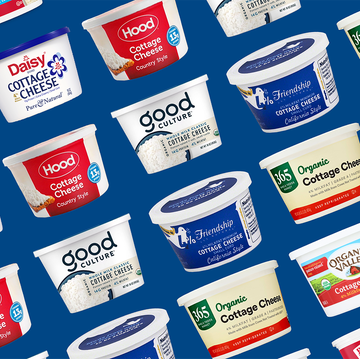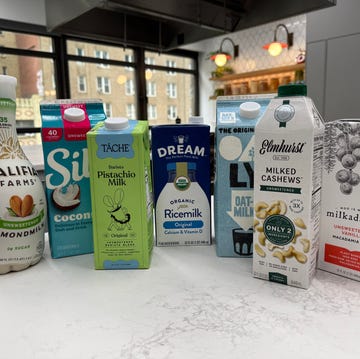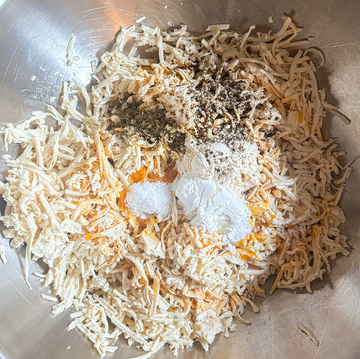If you’re on a mission to eat healthier, you’ve probably heard of agave: a clear, sticky liquid sweetener that comes from the same plant that produces tequila. In addition to being completely vegan, agave’s main selling point is its low glycemic index, which means that it won’t spike a person’s blood sugar nearly as much as other sweeteners out there, such as honey or cane sugar.
But while it’s often marketed as the perfect natural, healthy sugar alternative, agave nectar isn’t nearly as wholesome as it may seem. It’s full of fructose and devoid of nutritional value—and it also can cause a host of health issues if you consume too much of it. I did a deep dive, reading countless research and consulting two dietary experts. Here’s why you should reconsider that jumbo-sized bottle on your next Costco run.
1. It’s More Sugary Than Sugar
Agave is still sugar. Whether it sends your blood sugar on a joy ride or not, it’s still going to join forces with all the other added sugars you’ve consumed once it enters your body. Kim Yawitz, a registered dietitian and gym owner in St. Louis, points out that "all sugar is bad for you when you consume too much of it." And, she says, "Agave isn't a free pass."
It gets worse. Agave actually contains more sugar by volume than actual granulated sugar—14.07 grams per tablespoon as opposed to granulated sugar’s 12.57 grams—so if you’re swapping agave for granulated sugar in, say, your morning coffee, chances are you’re actually going to end up consuming more sugar by using agave than you would if you just stuck with granulated.
Some might argue that agave’s higher concentration of sweetness will lead people to naturally use less of it in situations like this, rendering this a moot point, but let’s be real: when you’re doctoring your morning coffee, you’re probably not measuring the sweetener or adding it gradually and tasting to find the perfect level of sweetness. You’re probably dumping what seems to be “the right amount” in one fell swoop. If that sweetener is agave, you’re probably going to end up with more sugar (and calories!) in that cup of coffee than you would if you were using table sugar.
2. And It’s High In Fructose
Agave syrup’s biggest selling point is its low glycemic index, typically between 15 and 27, compared to table sugar (approximately 68) and honey (approximately 55). While agave is “less likely to cause short-term blood sugar spikes," Yawitz is quick to note that "that doesn’t make it healthier.”
Dig a little deeper, and you’ll learn that agave syrup scores low on the glycemic index because, according to Yawitz, it is “mostly fructose.” Unlike glucose, which is primed to hit our bloodstream and spike our blood sugar immediately, she explains that fructose must be “converted into glucose in the liver” before it can be released into our bloodstream. And when we force our bodies to continually go through that extra conversion step, it can cause serious health issues over time, such as fat buildup in the liver (non-alcoholic fatty liver disease), insulin resistance, and increased triglycerides.
3. It Can Increase Risk Of Serious Illness
Because agave syrup has to be thoroughly processed in our bodies before it can be used for energy, consuming large amounts of it can be really hard on our bodies. According to Jessica Cording, registered dietitian, it “puts a lot of stress on the liver.” Too much stress like that can lead to liver disease.
In addition, this metabolizing process has other negative side effects. Cording shares that some of agave’s fructose is “converted into triglycerides,” a type of fat linked to “increased risk of diabetes, heart disease, and metabolic syndrome.”
So to be clear, you’re not exactly helping your body by swapping in agave for other sweeteners.
4. It’s Manufactured Through A Complicated Industrial Process
Marketers would have us believe that agave is created through the simple natural process of distilling and concentrating the sap of an agave plant. The truth isn’t quite so romantic. In reality, agave syrup is created through fructan hydrolysis, a long, convoluted process where the core of the agave plant, or “piña,” is crushed until it turns to juice. It is then distilled, filtered, hydrolyzed, filtered again, and “vacuum-evaporated” to remove as much water as possible and yield the final end product.
That’s quite a complex process to end up with something often sold as “raw.” And sure, it hasn’t been heated over 118º, so it technically still fits the qualifications of the raw food diet —but it’s far from "natural" by the time it leaves the processing plant.
5. The Farming Practices Are Just As Bad
The amount of energy consumed in agave syrup’s complicated manufacturing process is taxing on the environment, but the effects of how it’s grown and harvested may be even worse. Recently, the growing demand for agave has created big changes in the industry, forcing out small farmers and concentrating agave plant production on large plantations that use mono-crop methods as well as lots of chemical pesticides and herbicides.
The increased demand for agave has also prompted farmers to harvest agave plants before they are fully mature, which means that the plants are not allowed to pollinate or reach the maximum amount of nectar possible. This means that 1) farmers have to grow and kill more plants to harvest the same amount of finished product and 2) new agave crops are being planted using clones or GMOs.
Pesticides, GMOs, and no crop rotation: do we really want to be supporting a process so environmentally unsound?
Agave syrup might be marketed as the “healthy” sweetener, but it’s far from the pure, plant-based, natural sweetener it seems to be. At the end of the day, it’s still sugar. And it’s coming to us with an unhealthy side dose of environmental, manufactural, and health consequences that are too big to ignore.













